Joe Pintauro is a storyteller. Celebrated for his searing dramas in theatre and in the novel, Pintauro has earned renown for his poetic sense of language and psychological depth. He seems like a conduit between worlds on the stage and on the page, finding common ground within fact and fiction, past and present. And so it is with his photographs—stunning in their historic richness, allegory and mythos—now on view in the exhibition “Arcadia” at Peter Marcelle Projects in Southampton, NY through June 15, 2014.
Arcadia is a vision, not a place; a version of Eden in many ways, where paradise is all the sweeter for its destiny to be short-lived. It takes many forms in history and in literature, and for Pintauro, whose vision ricochets from memory to memento mori, from the passage of time to timelessness and resurrection, it is a concept left to the fates, as Milton might have said.
.
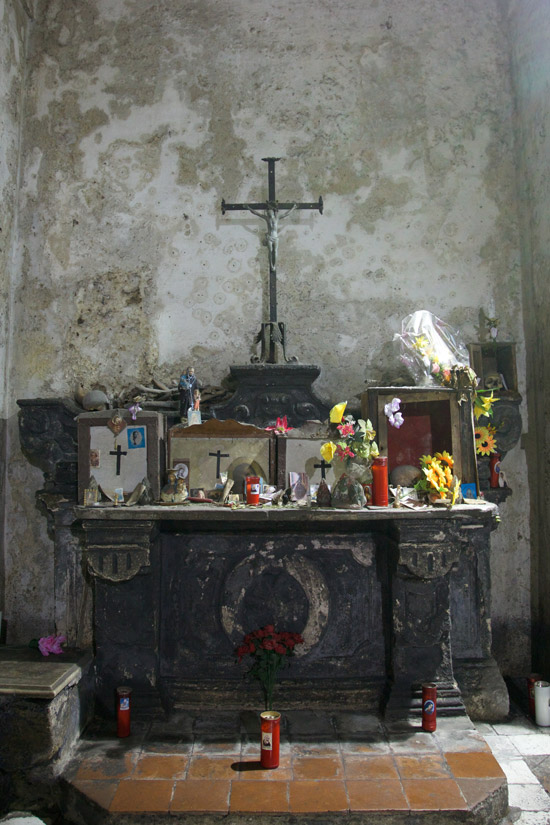
"No Day Shall Erase You from the Memory of Time; Virgil" by Joe Pintauro, 2013. Pigment print, 60 x 40 inches.
.
Recently, the Sag Harbor Whaling and Historic Museum in Sag Harbor, NY underwent an extensive restoration to its historic exterior. Pintauro, who lives in Sag Harbor, fixed his gaze on the four diminished Corinthian capitals, longstanding across the upper façade of this treasured place, built in 1845. Worn down by the elements, the hand-carved acanthus leaves take on new life here, their accreted and moldering surfaces amplified through Pintauro’s lens. And this is not just any lens, but a Hasselblad (the camera used in the Apollo moon landing), which is available for rent to artists worldwide.
.
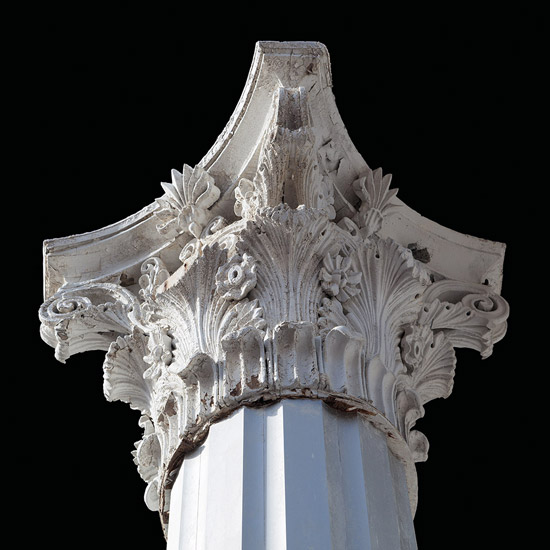
"Corinthian Capital With Pillar No. 4, Benjamin Huntting House, Sag Harbor" by Joe Pintauro, 2014. Chromogenic print, 30 x 30 inches. Ed 1/11.
.
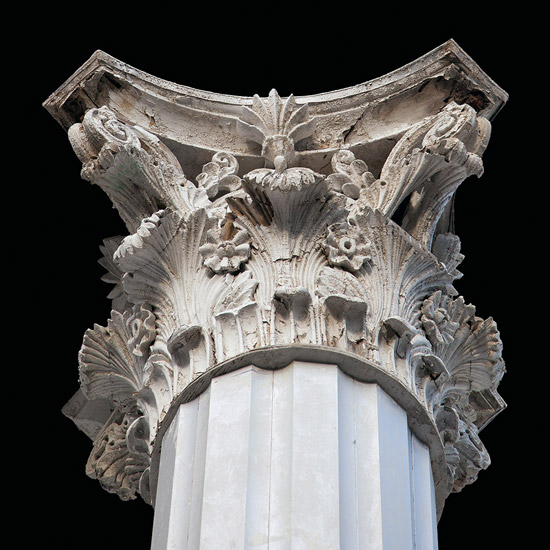
"Corinthian Capital With Pillar No. 3, Benjamin Huntting House, Sag Harbor" by Joe Pintauro, 2014. Chromogenic print, 30 x 30 inches. Ed 1/11.
.
Pintauro arranged to be raised up in the bucket of a lift-truck to go eyeball to eyeball with the capitals, focusing in on them at arm’s length to capture every crevice and chasm of their wilted beauty. For Pintauro, whose father was a cabinetmaker, the ravaged wood has a special significance, and the resulting portraits are dazzling. Digitally silhouetted against velvety black grounds, they possess the classicism and portent of Greek gods as well as the grandeur, now dimmed, of Sag Harbor’s maritime and whaling industry.
.
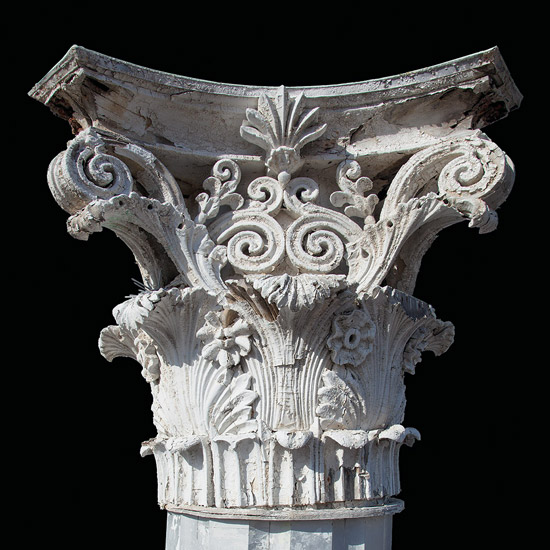
"Corinthian Capital No. 2, Benjamin Huntting House, Sag Harbor" by Joe Pintauro, 2014. Chromogenic print, 30 x 30 inches. Ed 1/11.
.

"Corinthian Capital No. 1, Benjamin Huntting House, Sag Harbor" by Joe Pintauro, 2014. Chromogenic print, 30 x 30 inches. Ed 1/11.
.
Photography, long considered one of the standard bearers of objective truth, has been transformed in the last few decades. The elastic nature of video and digital photography has made the idea of “truth” seem almost anachronistic. But Pintauro locates truth in the long view, both in ethos and aesthetics.
The majestic tree depicted in The Tree, Its Shadow and the Hill on Ocean Road still stands at this site, but now, just five years later, it is surrounded by hulking mansions, pool fencing and patio furniture. “That tree will never see its shadow again,” the artist has said.
.

"The Tree, Its Shadow and the Hill on Ocean Road" by Joe Pintauro, 2010. Gallery fibre Chromogenic print, 60 x 50 inches. Ed 1/18.
.
The tree exemplifies Pintauro’s vision of an Arcadia in decline, now hidden behind the hedgerows. The inclusion of the artist’s shadow, placed squarely in the lower quadrant of the image, transports us between then and now, to a romantic sublime fraught with self-consciousness and a context that lingers between fact and fiction.
Likewise, January Thaw, Hydrangea and Once Upon a Time in Sagaponack reference growth, antiquity and the sort of elegance carried only by an aging and untamed grace. The immaculate detail, visual complexity and hallucinatory ambiance, breathtaking in its all-over quality, is transcendent.
.

"January Thaw, Hydrangea" by Joe Pintauro, 2014. Chromogenic print., 44 x 29 inches. Ed 1/11.
.

"Once Upon a Time in Sagaponack" by Joe Pintauro, 2014. Chromogenic print, 44 x 29 inches. Ed 1/11.
.
A different utopia is seized in Mars, the candid portrait of a bronzed lifeguard perched high above the beachfront at his station. Like Michelangelo’s Lorenzo de Medici, this buff American icon acts as a heroic, reflective sentry—a witness to the human condition. For Pintauro, who grew up surrounded by literary allegory, the umbrella cast open above the lifeguard’s head acts like every bit a crucifix, its narrative all the more potent as the viewer absorbs the broken spine along its apex.
.

"Mars" by Joe Pintauro, 2012. Digital Chromogenic print mounted on plexiglass, 45.5 x 60 inches. Ed 1/11.
.
In Einstein’s Dream, double houses printed on Japanese Kozo paper seem to blink between glimpses of time and space, as if separate realities were occupying the same time. This disembodied juncture, manifest in wispy clouds that swirl above each frame, each one a little different, creates a hazy disparity between the here and now.
.
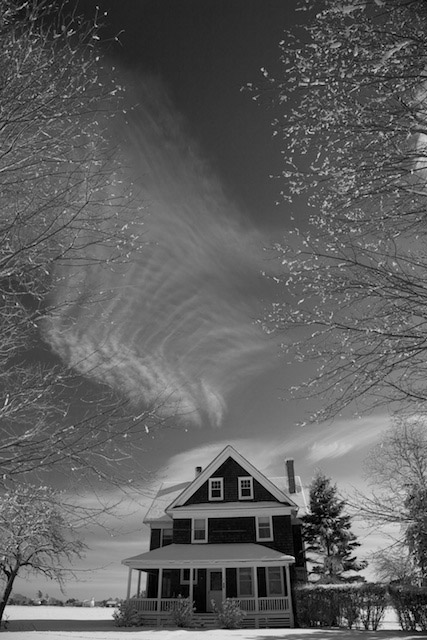
"Einstein’s Dream" by Joe Pintauro, 2014. Diptych, 2 pigment prints on Kozo paper 23 x 30 1/2 inches. Ed 1/18.
.

"Einstein’s Dream" by Joe Pintauro, 2014. Diptych, 2 pigment prints on Kozo paper 23 x 30 1/2 inches. Ed 1/18.
.
For Pintauro, the work pays homage to his favorite painter of the Late Renaissance, the great Paulo Veronese, whose compositions were invariably situated at mid-ground, as if all the world were a stage. Likewise here the artist sets the houses at the bottom of the frame, like railroad cars, with fully two-thirds of the composition shooting upward into an eternal sky. Like a doppelganger, the image is repeated in duplicate, but while the house remains the same the clouds have shifted, as if a layer of temporal reality has been peeled away.
Einstein’s concept of parallel realities was not a dream, exactly, but a plausible and distinct probability. Within this arena of arcane physics Pintauro digs in, exacting moments from this vernacular farmhouse and its environs as if sampling String Theory and its exigencies.
As the American photographer Edward Weston insisted, “To see the thing itself is essential.” For Pintauro, whose immaculate vision seems to reach around all the sides of a person, place or thing, this couldn’t be more true. The romance in Joe Pintauro’s exquisite photographic works is the visual experience.
.

"Blood Gun" by Joe Pintauro, 2012. Archival ink jet print, Cartiera Magnani handmade paper, 60 3/8 x 40 3/8 inches. A.P.
.
BASIC FACTS: Joe Pintauro: “Arcadia” continues through June 15, 2014 at Peter Marcelle Project, 4 North Main Street, Southampton, NY 11968. www.petermarcelleproject.com.
To see Pintauro's inspiration for some of his photographs, the Sag Harbor Whaling Museum is located at 200 Main Street, Sag Harbor, NY www.sagharborwhalingmuseum.org.
_________________________________________
Copyright 2014 Hamptons Art Hub LLC. All rights reserved.
